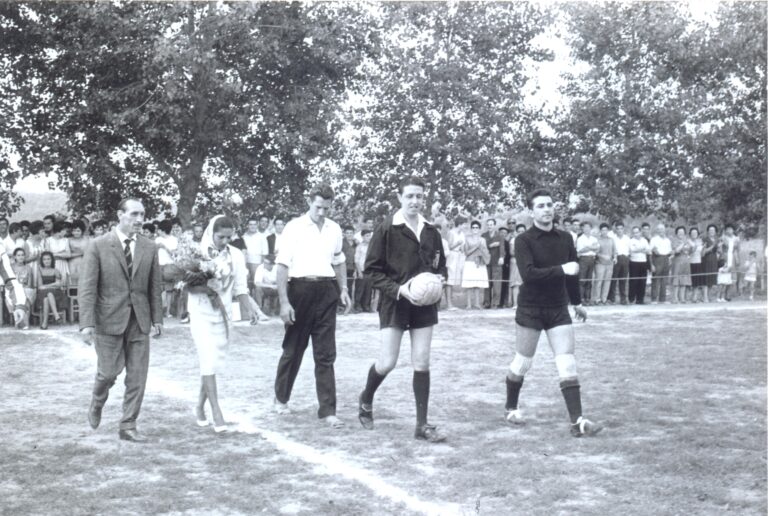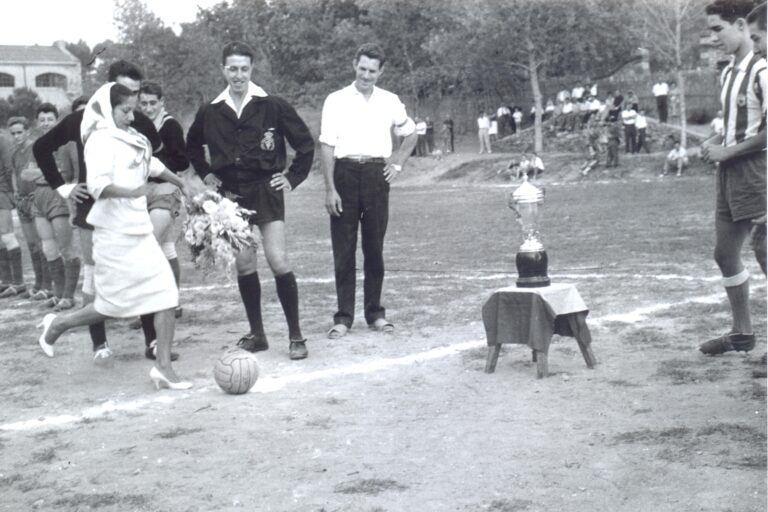Carmen Amaya
-

Photo: Josep Carreras
Biographical note
Carmen Amaya i Amaya (Barcelona, 1913–Begur, 1963) was born in a Gypsy family in the Barcelona neighbourhood of Somorrostro. From a very young age, her life was linked to dance and the culture of flamenco. Her early steps in dance were in the taverns of the Catalan capital, where she danced accompanied by her father, who was a guitarist. She started to catch the attention of the Barcelona public, and joined the company of Raquel Meller in the late 1920s. In 1929 she performed in Paris, and then went on to achieve global fame. The bailaora combined repeated tours and shows in Europe, South America, the USA and North Africa with roles in various Spanish, Latin American, North American and French films.
In 1952 she married Juan Antonio Agüero from Santander and in the last part of her life she wanted a tranquil space where she could rest between her artistic commitments. The place she chose was the Mas d’en Pinc in Begur, which Amaya had discovered through her representative. She spent her last years in this village in the Baix Empordà, where she made her mark through her involvement in events in the village.
Style and shows
Carmen Amaya redefined flamenco dance based on a passionate, instinctive style, which was the result of her being self-taught. Emotion, tension and liberty of movement characterised a form of dance that broke the moulds of the role of women in flamenco dance, which until then had been very discreet and restricted. She stood out for zapateado technique in which dancers make percussive sounds with their heels and toes, a step in which she excelled in technique and speed and which she sometimes danced wearing trousers instead of the usual traje de faralaes dress.
Amaya’s artistic personality made her a performer that audiences around the world wanted to see. Prestigious stages she performed on include the Teatro de la Zarzuela (Madrid), the Théâtre des Champs-Elysées (Paris), the Carnegie Hall (New York) and the Hollywood Bowl (Los Angeles), among others. Amaya also acted in films such as La Bodega (1929), María de la O (1936), See My Lawyer (1945) and Los Tarantos (1963).
-

Photo: Josep Carreras
Amaya and the Baix Empordà
Returning from a tour of America and Europe, Carmen Amaya came to Begur in 1961 and moved into the Mas d’en Pinc, a 17th-century fortified farmhouse. Her generous character and her willingness to get involved in initiatives in the town inspired the affection of the people of Begur. One good example of Amaya’s character is the organisation of a fundraising festival in Begur to raise money to illuminate the town’s castle. This was the last time she danced in public. On 19th November 1963, the day after being named an adopted daughter of Begur, she died at Mas d’en Pinc. She was buried in Begur’s cemetery, although some time later her remains were moved to Santander at the request of her widower.
Mas d’en Pinc – owned by the municipality since 1965 – houses a permanent exhibition in homage to the bailaora. In 2018, the Trade and Tourism Association of Begur organised a festival in homage to Amaya, with performances and activities related to flamenco dance.





